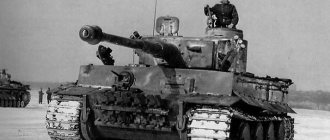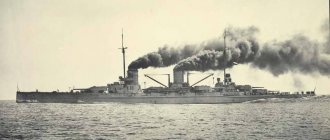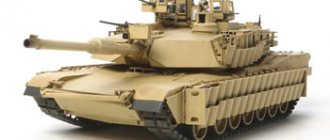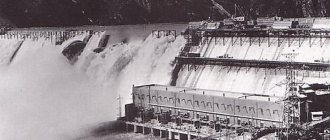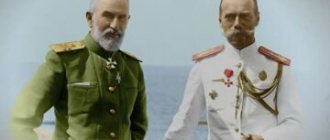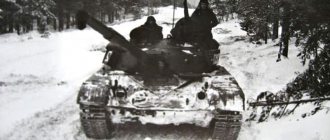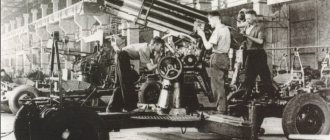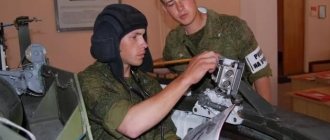The last tank battle of the 20th century: M1 Abrams vs T-72
At the end of February 1991, the Americans invaded Iraq. One of the first units to cross the state border was the 2nd Tank Cavalry Regiment. American tanks moved from north to south along “73 Easting” (Easting is an untranslatable word indicating the UTM coordinate line that is read by GPS receivers. These lines were used to determine the progress of the offensive across the featureless desert).
Tanks of the 2nd Regiment move through the Iraqi desert.
The core of the invasion force was the M1A1, which debuted in 1984. She received a new gun, to which “uranium” armor and new ammunition were added a little later.
After three days of rapid advance with sporadic clashes, the invading forces met one of the most combat-ready units of the Iraqi army. And everything that came next is considered to be the last tank battle of the 20th century.
M1 Abrams debuts
Attack helicopters circled over the tanks of the second regiment, which on February 23 were already in the Iraqi desert. Their mission was theoretically simple: to cut off the paths for Iraqis retreating from Kuwaiti territory. But in practice, in addition to the retreating infantrymen, there were large armored formations in the desert - which already promised a slightly different outcome.
The end of February 1991 was marked by sandstorms that limited visibility of the battlefield
At this time, sandstorms raged over the desert, which limited the visibility of the advancing troops. The first contact with Iraqi tanks was spontaneous. M1 Abrams from Fox Troop, 2nd Squadron, destroyed several Iraqi tanks. Later, several patrol vehicles were shot down. All this already pointed to enemy forces nearby, but the enemy was not visible.
A more detailed diagram of the battle for “73 Easting”
Three days later, Captain McMaster, who commanded the Fox platoon, was still moving through the desert in near-zero visibility conditions. When the vehicles climbed the hill, a frightening picture opened before them: an Iraqi tank division was located in the lowland. Realizing that his vehicles were already within reach of the enemy, the captain ordered to open fire.
This operation marked the debut of a new American car
The Iraqi tank crews had the terrain on their side: they were located away from a small hill - which hid them. At the same time, the American Abrams were forced to descend towards them, which exposed the weak armor of the roofs of the hulls and towers. It would seem that the debut of the M1 Abrams here would be marked by heavy losses - but no.
Lost Opportunities
As you remember, several Iraqi reconnaissance groups were destroyed long before meeting the main forces. And the wind raises a sand wall, reducing visibility. Hussein's tankers were no less surprised than the Americans, which cost them their lost advantage. And the time was dawn - 4:20 am.
Another argument for the invasion force was the M2 Bradley infantry fighting vehicle. It was distinguished by impressive - for its class - armor, and a pair of TOW ATGM launchers
The first shot from McMaster's lead tank set the tone for the entire battle: the Abrams' cumulative ammunition disabled the tank as it slid over an embankment. Next, the gun was loaded with an M829 sub-caliber projectile - thus, with a core made of depleted uranium. It hit an Iraqi tank that was turning to fire at an M1 Abrams. When the gunner of the American car noticed the third target, the driver realized that they were near a minefield and abruptly changed the direction of movement.
The torn down tower of the Iraqi “Lion of Babylon” (Asad Babil’s maiden name is an export T-72)
Iraqi tank shells began exploding near McMaster's tank as two platoons of Eagle Squad deployed into battle formations to support Fox Squad's tanks, which were losing initiative.
Despite the readiness to meet the T-72, Americans more often encountered the Chinese Type 59 (a relative copy of the T-55) and the Soviet T-62
Nine Abrams quickly rushed through the formations of Iraqi troops, destroying enemy equipment. The Asad Babil tanks (T-71M1, planned for production in Iraq under a Soviet license) and infantry fighting vehicles, which were in service with Iraq, turned into burning torches, causing reputational damage to the gunsmiths of the USSR, which was living out its last year.
A pair of American Bradleys against the backdrop of the burnt-out shell of a T-72
Eagle squad tanks left a 5-kilometer gap in the Iraqi defenses. Due to the growing disorganization in their ranks, American M2 Bradley infantry fighting vehicles entered the battle. These vehicles carried TOW anti-tank missiles and were armed with a 25mm Bushmaster autocannon, which suppressed Iraqi infantrymen.
What can happen in 23 minutes?
After a swift tank attack, which followed the sluggishness of the Iraqis, the job was completed by the artillerymen, who consolidated the success of the tanks of the second regiment. In total, Iraqi equipment losses in this battle amounted to 30 tanks and 14 infantry fighting vehicles. And the American tanks, in fact, reached the initially set point. Only 23 minutes have passed since the first contact with Iraqi tanks! Captain McMaster decided to consolidate the success without giving the enemy time to regroup.
Despite the prepared defense and the initial advantage, the Iraqi tank crews “lost” the first shot to the enemy
But there was no need for that! Single Abrams, scattered in search of the retreating enemy, never “found” his flanks. What is noteworthy is that it was at that moment that the first American tank was damaged - the vehicle ran into a mine, receiving damage to the chassis.
Iraqi T-55 abandoned in the caponier. In total, 250 soldiers surrendered
Not far from the scene of the events described, the Killer, Ghost and Iron detachments met smaller enemy forces. Several Iraqi counterattacks were directed at Eagle's positions, but they were doomed from the start, since the initiative was already in the hands of the Americans.
Results
By nightfall, American troops began calling for the Iraqis to surrender. More than two hundred of Saddam's guards surrendered. Their losses amounted to almost 1,000 personnel, 85 tanks and up to 40 infantry fighting vehicles. The Americans “got away” with 12 killed, 57 wounded soldiers and 32 lost vehicles.
One of the newspaper illustrations from that time. Despite details such as the “inferiority” of the Iraqi T-72s, the propaganda message was received: “M1 Abrams is a panacea against Soviet tanks.”
All of the above is more like the plot of a low-budget propaganda film about brave and invincible American soldiers. But - give or take - the outcome was exactly this: the Iraqi defensive formations were broken by smaller forces. Although, there is some slyness here: there were fewer tanks, yes, but the American Abrams operated with artillery support, which the Iraqis almost immediately lost.
Burning Type 69. Iraq purchased similar vehicles in China (this was the only export success of the Chinese with this model)
Omitting the slippery point about the fighting qualities of the Iraqi guardsman, or the soldier under the Stars and Stripes, we need to talk about the superiority of American weapons in those conditions. Thus, their M2 Bradley infantry fighting vehicle was created based on a careful study of the experience of Soviet troops in Afghanistan, who were faced with a critical lack of infantry fighting vehicle armor. In addition, the M2 had two TOW ATGM launchers. And Iraqi infantry fighting vehicles were rarely equipped with Malyutka missiles, the use of which is not mentioned in this conflict.
And finally, tanks. It is believed that Desert Storm was a victory over the T-72, one of the most formidable Soviet tanks. But! Iraq had no more than 1,000 vehicles, and the invasion forces deployed almost two thousand Abrams. They were upgraded before the invasion to M1A1 level (German gun, armor and depleted uranium shells), which accounted for encounters with potential Soviet tanks and well-trained Soviet tank crews.
Another illustration in this spirit. This time - the M2 Bradley defeated the Soviet infantry fighting vehicle
And the Iraqi T-72, like all export weapons, had some differences. Firstly, in the forehead of the turret and hull of these vehicles there was ordinary homogeneous armor, and not multi-layered - as on Soviet tanks. And secondly, Soviet tank crews stopped using the armor-piercing shells that Hussein’s tankers had back in 1973. Add to this the demoralization caused by constant bombing and a less functional fire control system - and everything will fall into place.
T-72 versus Abrams - a view from overseas
Home » Tanks of the present and future » T-72 versus Abrams - a view from overseas
Tanks of the present and future
boroda 01/15/2013 450
0
in Favoritesin Favoritesfrom Favorites 0
The eternal debate about whose school of tank building is better? A number of documentaries have been released in the USA, shown on National Geographic and Discovery, in which they seriously claim that the Abrams is the best tank in the world. But as numerous discussions with American tank crews show. They don't even think so. I bring to your attention a translation of one of these discussions.
An American, a former Abrams shooter from Fort Knox (under the nickname Bluewings12), talks about testing American ammunition on the dynamic protection of Russian tanks captured in numerous wars, as well as the shortcomings of manual loading in the M1 Abrams tank and the features of its fire control system .
The original text is here - https://www.strategypage.com/militaryforums/2-19384/page1.aspx#startofcomments. Well, I found the translation on the website of the famous Gurkhan - https://gurkhan.blogspot.ru/2013/01/blog-post_2954.html.
On one side, the remote sensing device can deflect the projectile by 25 degrees. After which it becomes impossible for the projectile to penetrate inside the tank.
Another point is the shock wave, this can cause the projectile to break into 4, 5, 6 or more pieces. Therefore, the projectile simply collapses before reaching the main armor.
In this regard, tungsten is slightly better than depleted uranium.
Only in 40% of cases can our latest models of projectiles overcome the latest modifications of the Russian remote sensing system.
Quote:
According to the standard, the M829A2 is said to penetrate Kontakt-5"
Well, easier said than done. Contact-5 can reflect the M829A1 and DM-53. And the difference between A1 and A2 is greater on paper than in real life. Actually, DM-53
even better than M829A2.
M829A3 is a completely different fish. This is APFSDS.
But it wears out the gun barrel a lot.
And what are the Russians doing to combat new threats? They are making a new generation of remote sensing, better than Kontakt-5.
Unfortunately, the M829A2 can be COMPLETELY destroyed by the Contact-5 DZ, as well as the DM-53, especially uranium shells.
I generally trust Russian remote sensing, because... I saw the test results. All I want to say is that if the Iraqis had had DM contact (not 5) on the T-72s in the Gulf War, then the battles would have been fought at much closer ranges and the losses of the T-72s would have been minimal.
If the Iraqis had T-80UM1 with contact-5 (but the ammunition is as shitty as 3BM12, 3BM15), then the USA would have won, but with losses. Well, if you gave them 3BM42, then the T-80 would easily win.
In general, the M829A1 can penetrate contact-5 in 1 case out of 5. This is alarming.
M829A2 is also not good enough, it is not able to defeat Kontakt-5 every time. This is the reason why the US is developing the A3.
I would like to remind you once again that contact-5 not only deflects the projectile, but also destroys it, and the deflection can reach 30 degrees. I'm telling you, remote sensing works.
Quote:
Remote sensing is only sometimes capable of reflecting a projectile
Well, I don't know what you mean by sometimes.
Ask yourself why we developed the M829A2 and DM-53 when the M829A1 and DM-43 made bare armor for all Russian tanks. What is the reason?
Quote:
DZ has minimal impact on breaking through APFSDS
DS has minimal impact on the impact of APFSDS. Even at the most favorable angle of 90 degrees, the remote sensing reduces the possibility of penetration by 30%, which is not “minimum”.
Now, if a projectile hits the turret's remote protection at an extreme angle, then in 80% of cases the projectile will be destroyed and will not even leave scratches on the main armor.
Quote:
The DZ will ideally ensure that the DM53/M829A1 projectile is mixed by 2-3 degrees.
No, maybe all of 30 degrees. Therefore, even if the remote sensing device penetrates, the projectile ricochets off the armor.
Firstly, all projectiles ricochet. The only question is at what speed and at what angle. The longer the projectile, the greater the ricochet angle, and the faster the projectile, the greater the angle. The critical angle is measured from the normal (i.e. 90 degrees from the horizontal.). A projectile with a 1/10 L/D (Length/Diameter) ratio at a speed of 1.7 km/s has a ricochet angle of 78 degrees if it is made of steel and 81 degrees if it is made of tungsten or uranium. With a ratio of 1/15 D/D, the angle increases to 82-83 degrees. And perhaps at 1/30 D/D it reaches 84-85 degrees. Tate's formula provides a rebound within -+5 degrees, i.e. in 50% of cases, a 1/10 D/D projectile ricochets at angles of 73 -83 degrees. And if the DZ plate exceeds the 1/4 T/D ratio (plate thickness/projectile diameter), then these angles are reduced by a few more degrees. We must also take into account that only one EPS plate reduces penetration by 10-20%, but in Contact-5 there are two such plates, which is why Contact-5 works so well against projectiles.
Quote:
Thanks for advertising DZ
I'm not defending her. In the west, we have much better types of armor, because... we can make it from high-quality and expensive materials.
a comment
When the Americans had no trace of combined armor, the Russians had armor with ultraporcelain (electrocorundum) ... which was never cheap.
And when did it appear that aluminum filler in Chobham was expensive?
Western armored structures are NEVER more expensive in materials (not in overall price, there are a lot of factors) than ours... unless you take all sorts of options with sand cores, of course. But even when these rods were coming, Chobham wasn’t particularly expensive either.
But DZ is a cheap solution to make a medium tank well protected. And Russia is the only country with a decent remote control. DM is not a panacea, but if you can do it, it works. The latest Russian designs can be a nightmare for the gunner and a tedious task for the loader (that's why the Leclerc has the AZ).
Let's imagine that SEP Abrams with M829A2 stands against T-80UM1 with 3BM42 at 4000 meters.
The T-80 starts with a Reflex, maybe even two, the reflex may hit, or maybe not. If it hits, then Abram may get problems with optics (your TIS fails). This is bad to begin with.
Abrams is approaching the T-80 at top speed, which is also not averse to getting closer. Now they are 3000 meters away. They start using their BOPS. I'm betting on the T-80, because loading shells at full speed over rough terrain is not a problem for it - as I already said for loaders in the USA, Germany and England - this is not an easy task. AZ doesn't get tired. Now everything depends on the gunner, especially the Abrams gunner. If it hits the weakened area of the turret or the lower part of the hull, the T-80 will die. If it hits the forehead or side of the tower, then it’s 50/50 that it will kill. During this time, the T-80 will fire a sea of shots. He'll end up somewhere. If it hits the forehead, then Abram lives, if it hits the lower part of the hull or in a weakened zone, then we have one killed Abrams. You can see that one on one is difficult to fight.
I have to say that the result would be the same if you replace the Abrams with a Leopard, Leclerc or Challenger. Well, maybe Leopard and Leclerc have more chances, because... their laser rangefinder is not limited to 4000 meters.
It's easy to say that the Russians can't make good tanks. But that's not true. And, thank God, there are people who do not post here, but think what to do with reflex and remote control.
(we still do not have proper protection from the reflex, while the Russians have the Arena from our ATGMs)
Quote:
Don't worry about the limitations of the laser rangefinder
Don't be an idiot, if a shooter wants to shoot beyond 4000, he manually enters the distance.
When trying to measure a distance of more than 4000 m, the gunner sees four dotted lines “—-” in the sight, and not the distance. Trust me, I know. I was one of the top gunners for eSim and some Abrams and Bradleys at Fort Knox.
In general, you need to be careful when you measure a distance of 3000 meters; unexpectedly the system may give you 3800 meters. Therefore, you need to measure 3-4 times to be reliable. All tanks have these restrictions. I know that in the Leopard 2A4 (2A5, 2A6) and Leclerc they are somewhat further, and the Russians have the best laser rangefinders, because they need to use their reflexes at 5500m.
Abrams has another problem with the rangefinder. You cannot take measurements multiple times in a row, otherwise the scope will burn out. An 8 second break is required between measurements. If you see a green F outside the GPS range and the red reticle disappears, you have burned out the laser rangefinder.
Quote:
Just a laser rangefinder allows you to solve all the main problems even at 4000 meters
This idea is only true if you don't have good ammunition. Think about it... Why is a gunner given a handicap of 4000 m when he can kill a tank at 5000 m.
About manual loading on the Abrams:
Let's first get our bearings on the tank. Let's imagine the working conditions of the loader.
1. Projectile weight. He moved incorrectly, grasped it incorrectly, placed it incorrectly - and at the very least, a bruise on his arm or a pinched finger. And you can break something or tear or stretch the ligaments of your hands. Therefore, the loader is always in the tank at all times wearing winter mittens or at least gloves.
2. Small dimensions of the fighting compartment. There are only protruding metal parts around. If the primer catches on something, “they’ll pull us out from under the rubble.” Therefore, the loader always takes the projectile in such a way that he places the palm of his left hand on the bottom of the cartridge case, covering the primer.
3. Shutter wedge. Heavy item. A powerful spring closes the bolt (moves the wedge from left to right) in half a second. I placed my hand incorrectly when sending, spread my fingers - and the word “pinched” is no longer appropriate here. Fragmentation. Amputation. Therefore, the loader, after inserting the projectile into the chamber, sends it in one powerful movement, simultaneously accompanying the bottom of the cartridge case with his left hand, clenched into a fist. Thumb towards you. At the same time, the wedge, closing, gently moves the hand to the right. If the firing was not energetic or the projectile was not followed by hand to the end, then the wedge may break off the stoppers ahead of time and “bite” the cartridge case. Then you need to use a special wooden pusher to push the projectile into the chamber and allow the wedge to close. Sometimes, in a hurry, a metal gun stopper comes to hand in a marching manner. And sometimes this metal stopper hits the capsule... Then again we sing the song from point two.
4. Rollback of the gun. Now, at least one and a half tons of weight of the rolling parts of the gun fly back up to a meter in a split second (for different tanks). It is not recommended for anyone to expose their face, hand or other parts of the body to this movement. There are special guards to prevent the commander or gunner from sticking their limbs and heads in, but the loader does not have one. The loader saves himself. Therefore, after loading, the loader, waiting for the shot, is in the pose of the crucified Christ. His back was pressed against the turret shoulder strap, his arms were outstretched and holding onto handles and other available objects.
5. Operation of the Stabilizer. When the stabilizer is turned on, the tank seems to be divided into two independent parts for you - a stationary turret and an armored hull rotating under you with all its details. Either it scrolls a little to the right or left, then suddenly it drifts in one direction - and instead of the engine partition, there is a front tank rack or control compartment next to you, and you see how the driver pulls the levers. It is strictly not recommended to put any parts of your body into this rotation - if the stabilizer has already coped with 15 tons of rotating mass, then it will have enough strength to wrap your intestines around the fighting compartment. Only the round pole below you is not included in this rotation - it is, as it were, suspended under the tower and rotates with it. And the breech of the gun moves up and down on its own, regardless of the rotation of the body underneath you. The feeling is like being inside a huge deadly mechanism. Trying to take a shell out of an ammunition rack that is spinning back and forth and putting it into a breech that is swinging up and down is obvious suicide.
Therefore, before loading, the loader presses the large black button on the fire blocking device and thereby stops the stabilizer in both planes - all rotation and swing freezes - and also breaks the electric trigger circuit of the gun, preventing the gunner from firing a shot before the loader is ready. After loading is completed, the loader, by pressing another lever on the same device, turns on the firing electrical circuits and unlocks the stabilizer. The gun is automatically aimed at the point at which it was aimed before the stabilizer was locked.
5. Rocking when moving. It adds unexpected jolts and swings in different directions and forces all actions to be done taking into account the readiness for the unexpected. This same pitching, as well as the driver’s actions to control the tank, are the main drivers of all stabilizer actions.
7. Placement of ammunition. Retrieving an artillery round from a tank rack, from a rear ammunition rack, from an ammo rack in a turret, or from a separate (“personal”) stowage for one projectile are different things. The fastest (and most convenient) way is to load shells from a tank rack. In this case, after pulling out the shell, you find yourself in the normal position for loading - face forward, your left hand holds the artillery round by the bottom of the cartridge case and covers the primer, the right hand supports the artillery shot in the area of the transition from the cartridge case to the projectile itself. But in other ammunition racks the shells are arranged as if in a checkerboard pattern - one artillery round with a shell to the left, another to the right, a third to the left again, etc. There you already have to somehow dodge in order to eventually end up in the classic loading position described above.
Tested in combat: T-72s proved to be more survivable compared to Abrams
In February of this year, a satellite image of the location of the most combat-ready unit of the Iraqi army, the 9th Armored Division, appeared on the Internet. Experts counted 80 Abrams tanks in Taji, most of which needed restoration. In total, the United States transferred more than 150 combat vehicles to the Iraqis. Of these, according to the roughest estimates, about fifty can be safely classified as irretrievable losses, that is, they exploded or burned and cannot be restored. At the same time, T-72S of the Iranian Islamic Revolutionary Guard Corps successfully fought in Iraq.
A cluster of M1A1M Abrams tanks at the Iraqi Army's 9th Armored Division base in Taji. In the satellite image, 80 Abrams tanks can be counted (that is, apparently, almost all remaining in the division), many of which are clearly damaged or understaffed. pic.twitter.com/hjUrQehBIL
— Military Columnist (@Milcolumnist) February 3, 2022
As one of the leading experts on conflicts in the Middle East, Yuri Lyamin, said, after the catastrophic defeats of the Iraqi army in the spring and summer of 2014, in battles with militants of the terrorist group “IS” banned in Russia, Iran began providing large-scale military assistance to the Iraqi government forces.
“In the early spring of 2015, T-72S tanks were delivered from Iran from the Iranian IRGC ground forces. The exact number of vehicles delivered is unknown, but most likely we are talking about a very limited number. These tanks were distinguished by the fact that they did not have standard dynamic protection.
The “Seventy-Seconds” took part in battles in different regions of Iraq as part of the most combat-ready units of the People’s Militia Forces, in the training of which Iranian advisers were involved. During all this time, no losses were reported,” notes Lyamin.
T-72S in Iraq. pic.twitter.com/wbJP7swRmp
— Ivan O'Gilvi (@o_gilvi) May 24, 2022
In his opinion, this is facilitated by the tactics characteristic of formations trained by Iranian advisers, when a few tanks are mainly used as mobile firing points that support infantry from a distance and try not to expose themselves to enemy anti-tank weapons.
“The Iraqi Abrams had less well-thought-out tactics, which led to such significant losses,” the military expert concludes.
T-72S in Iraq. In one of the photos - together with the Abrams tank. pic.twitter.com/Z3BpcKStFY
— Ivan O'Gilvi (@o_gilvi) May 24, 2022
The T-72S is armed with a 125 mm 2A46M cannon, with which a 7.62 mm PKTM machine gun is coaxial. A large-caliber 12.7-mm NSVT was used as an anti-aircraft weapon.
The machine is equipped with a complex of mounted dynamic protection “Contact”. Engine power 840 hp Maximum speed 60 km/h. Power reserve - 600 km. A special feature of the tank is the ability to use laser-guided missiles. Crew - 3 people.
Iran was the only country to purchase the T-72S; in total, there are currently more than 420 such tanks in service.
